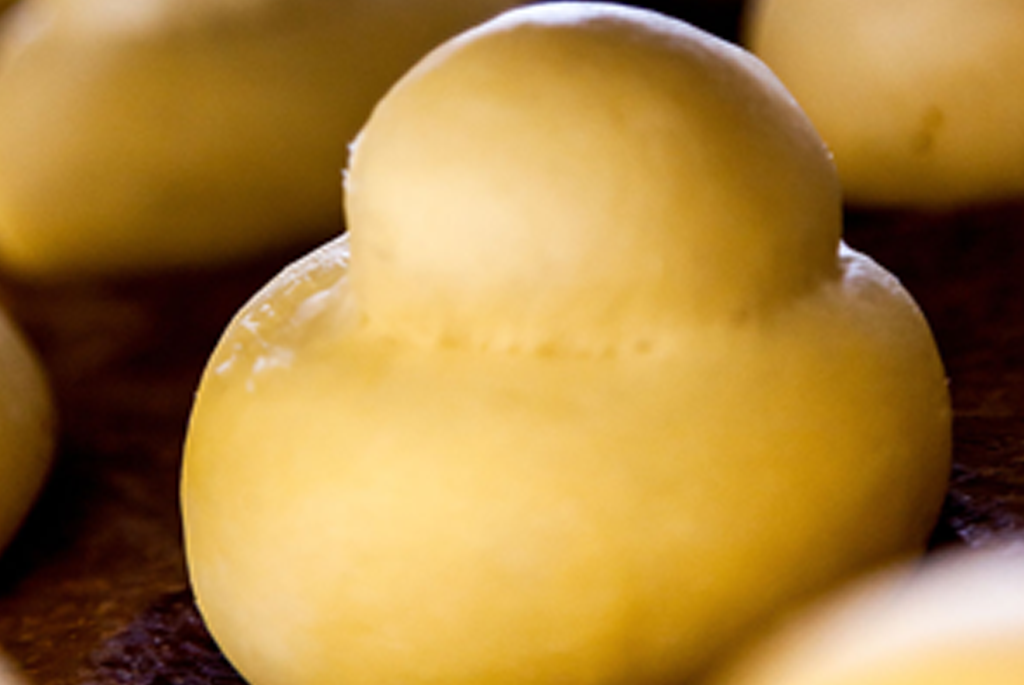
16/10/2023
Who, spending a summer in Sicily, having fun with the sea, diving and good food, doesn’t have memories of the inimitable “brioscia co tuppo”?
Sicilian brioscia
Brioscia
The “brioscia co tuppo” is the Sicilian variant of the classic croissant but differs in the more compact dough, the ingredients, the preparation and the different alveolation. Although both confectionery products are made up of flour, eggs, yeast and sugar, the dough is different: while in the croissant butter is used which gives a more accentuated consistency and flakiness, in the brioscia lard is used, a noble fat used in its recipe from the beginning, and a greater number of eggs which give it a different texture and make it soft and doughy.
brioscia cu tuppo
Brioscia with tuppo
But what does the expression “co tuppo” mean?? Simply “chignon” which in Sicilian dialect recalls the shape of the traditional hairstyle that Sicilian women once wore. Furthermore, it is necessary to specify that the correct name is precisely “BRIOSCIA” and that it was the French who invented the Sicilian term and changed it to “BRIOCHE”.
Ancient granite well
And as tradition dictates, brioscia is accompanied by another great specialty that has and does not fear rivals: granita, whose origins are attributed to the Messina area at the time of Arab domination. The Arabs brought the recipe for “sherbet” (sorbet), an iced drink flavored with fruit juices or rose water. In the Middle Ages, the “nevaroli” collected snow during the winter months on Etna, on the Peloritani, Iblei and Nebrodi mountains and then stored it in the “neviere” which were special stone buildings erected over natural or artificial caves.
In the summer months, the ice formed on top was taken and then scraped (in Sicilian dialect “rattata”) and covered with fruit or flower juices. During the sixteenth century, a change was made to the Arab recipe, discovering that it was possible to use snow, combined with sea salt, as a eutectic to freeze the preparations, thus the pozzetto was born, a wooden vat with a zinc bucket inside which it could be turned with a crank: the cavity was filled with a mixture that froze the contents of the well by removing heat while the rotary movement prevented the formation of too large ice crystals. The granita prepared in this way replaced the “rattata” over the centuries until reaching the twentieth century where the manual well was replaced by the ice cream maker.
The most traditional granitas are those with the flavors of lemon, almond (in dialect “minnulata”), pistachio, coffee, chocolate, prickly pear, strawberry, peach as well as those with the flavors of cinnamon, jasmine and “scursunera” (born from union of jasmine and cinnamon). In the eastern part of the island, the granita has a semi-liquid consistency while in the western part it has a finer and more homogeneous consistency.
Half a coffee with cream
And right in Messina, the city of the Strait, it is possible to taste the famous “coffee with cream”. Messina people often ask for “mezza con panna” at the bar but what do they mean exactly?? The term is given by the fact that between the 1950s and 1960s, when the granita was accompanied with long, thin crusty bread, precisely to favor its dipping, the granita was served in a tall glass and therefore of greater capacity. then those who preferred a smaller quantity of granita asked for “half”. Thus the granita began to be served in the common water glass which has become the “standard” form until today. So famous and appreciated that “coffee with cream” has become not only one of the symbols of the city but above all a real trademark protected since 9 March 2017 when the city council approved the regulation for its inclusion among the denomination trademarks of origin (De. Co.). But no less is our Catania, the city of the elephant where the granita with Bronte pistachio and almond stands out in particular, which responds to its rival by not being satisfied with the “protected brand” but aiming to achieve European Certification.
Almond granita
It may be the fault of the sultry heat or its infinite goodness but in Sicily, where the summer season begins in March and lasts until October, the classic winter breakfast with cappuccino and croissant is set aside to make room for the excellent brioscia with granita. Whether it is sweetish like that of Messina and Ragusa or a little tending towards sour like that of Catania and Syracuse, eating it is a real ritual that all Sicilians cannot give up, as will happen to every tourist or visitor who arrives in this magical land rich in sun, beauty and flavour.
